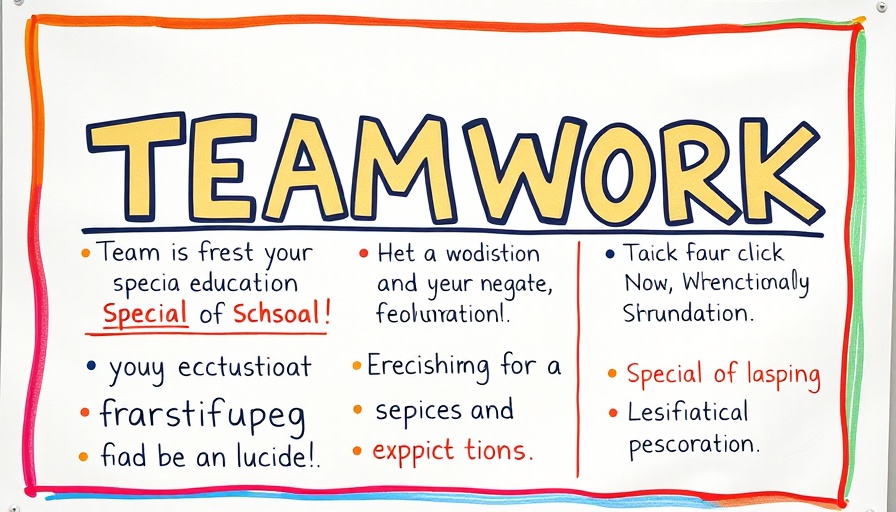
Building a Foundation of Teamwork in Special Education
Classroom mission statements serve as more than just words on a wall; they are the heartbeat of collaboration in special education environments. Establishing a clear roadmap for how educators, paraprofessionals, and support staff interact can lead to more cohesive teamwork and ultimately a more harmonious learning atmosphere for students. As education professionals often grapple with diverse opinions, particularly in special education settings, a well-formulated mission statement can facilitate understanding and consistency among team members.
Creating a Classroom Mission Statement
When creating a classroom mission statement, it’s essential to gather input from all team members. This inclusivity not only fosters operational clarity but also makes each staff member feel valued, thereby reducing dissent. Conduct initial discussions where everyone shares their vision of classroom culture. Questions to ponder include: What tone do we want to set? How should we communicate with our students? Such dialogues, while they may initially feel overwhelming, are crucial in preempting future disagreements.
Fostering Open Communication
Building a collaborative team requires effective communication, particularly when stakeholders originate from varying backgrounds or experiences. It's vital to facilitate an atmosphere where everyone feels comfortable voicing their opinions. Consider implementing regular check-ins or team-building workshops aimed at discussing mission statements and classroom practices. This ongoing dialogue not only mitigates misunderstandings but also reinforces commitment to a shared goal.
Strategies for Team Cohesion
Establishing a classroom mission statement is just the beginning. To maintain team cohesion, consider implementing strategies such as peer observations. This allows educators to learn from one another, fostering an environment of trust and shared accountability. Encourage staff to highlight innovative teaching practices that align with the mission statement, thereby solidifying the collective purpose.
The Role of Training and Professional Development
Consistent training serves as a critical element in aligning team members with the classroom mission. Schedule workshops and professional development sessions focused on best practices in special education. This investment in staff not only equips them with the necessary tools for their roles but also strengthens their commitment to the collective mission, providing frameworks for how to handle challenges collaboratively.
Real-World Implications of Effective Teamwork
Imagine a scenario where a student faces behavioral challenges. When teachers and paraprofessionals operate on the same page, they can craft a unified response, enhancing the student’s experience and increasing their likelihood of success. Conversely, when there is confusion or lack of agreement on classroom expectations, students may struggle to understand boundaries or receive inconsistent messages.
Building Trust Through Transparency
Trust is the cornerstone of any successful team dynamic. Regular meetings to discuss both successes and challenges reinforce transparency and create an avenue for collective problem-solving. Taking time to reflect on team dynamics can illuminate areas needing improvement, allowing the team to adjust proactively rather than reactively. Ultimately, when team members feel safe to express themselves, creativity flourishes, empowering everyone involved.
Taking Action: Start Crafting Your Mission Today
The time to implement your classroom mission statement is now. Use this opportunity to engage your colleagues in a meaningful discussion about what they envision for the classroom culture. Employ the insights gained from this article to initiate dialogues, conduct training sessions, and establish an inclusive framework that promotes teamwork. Remember, the commitment to collaboration extends beyond words—it's an ongoing process that must be nourished over time.
In conclusion, the integration of a classroom mission statement as a strategic tool fosters a positive learning atmosphere, paving the way for better teamwork and enhanced educational experiences for students with special needs. By cultivating a space where collaboration thrives, educators can also enjoy a more fulfilling and harmonious work environment.
 Add Row
Add Row  Add
Add 




 Add Row
Add Row  Add
Add 

Write A Comment